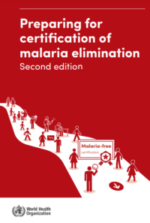DEEP DIVE
Plasmodium knowlesi
08/11/2018
14/07/2025
This is an active Deep Dive and we welcome your contributions! If you are currently involved or planning research activities on Plasmodium knowlesi please contact MESA (mesa@isglobal.org) or add your project to the database.
——
Plasmodium knowlesi is the fifth species that can cause malaria in humans and was declared an emerging public health threat in 2004 [ref]. Currently, this species still holds many unanswered questions, such as its transmission mechanism or its complete geographic distribution; threatening the effectiveness of malaria control and elimination strategies. In the last years, the number of cases reported has increased in Southeast Asia and P. knowlesi is among the first causes of malaria in Malaysia [ref].
In 2011, WHO held an informal consultation on the public health importance of P. knowlesi and the creation of an Evidence Review Group (ERG) was requested in 2016. The outcomes from the ERG were presented to MPAC in March 2017 [ref].
MPAC noted with concern the increase of P. knowlesi cases in Malaysia, potentially linked to a change in land use and the plausibility (though not definitively demonstrated) of human-vector-human transmission. MPAC also highlighted that if human-vector-human transmission is demonstrated in Malaysia, P. knowlesi would need to be considered a human malaria infection and elimination of P. knowlesi may be necessary for certification of malaria-free status [ref].
This Deep Dive was first created in November 2018 to describe the landscape of research in P. knowlesi. It was then updated in November 2024 to inform discussions at the WHO technical consultation on the control of zoonotic malaria (ref). The technical consultation underscored the urgent need for coordinated action to address the growing burden of P. knowlesi. It also set out new research priorities and reaffirmed commitment to resolving certification challenges in countries where human malaria has been eliminated but zoonotic transmission persists.

Total
projects

Total funding
amount



